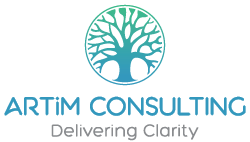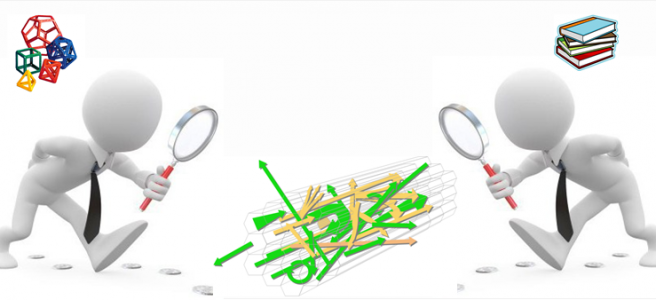In the last few posts I described a sequence of iterations that started with a certain initial hypothesis and an intervention that would help us assess its validity. We implemented the intervention and carefully observed what happened, reflected on it and then came up with an adjusted hypothesis as input for the next intervention. We did this three times. One might wonder whether three iterations were necessary. It is possible to argue (perhaps with a liberal dose of 20:20 hindsight!) that this was an inefficient process. But was it? In this post let’s explore this question – to see what we can learn that we can apply over a broader range of situations.
One of the problems with ‘messy’ situations, of which organisations as complex adaptive human systems are a great example, is that it is very hard to know everything there is to know about them. There is just too much happening and not all of it is explicitly stated. Even if we were able to think of everything that is relevant, our limited cognitive capacity would force us to whittle the list down to a manageable number. And we don’t really know enough to do that with any degree of certainty.
So while we want to get to our goal in an efficient way, we also want to be reasonably confident we haven’t missed anything that could end up being critical. Is there a way to achieve this rather fine balance? It’s difficult, but at the end of the last post, I suggested a few ways to get closer to this ideal. One is to use a framework to structure our thinking and the other was to operate in a learning mode. To illustrate these two recommendations let’s consider the balanced scorecard, a familiar framework that evolved over more than a decade.
The evolution of the balanced scorecard has often been described a series of versions of the framework. When it was first popularised in a Harvard Business Review paper in 1992 mainstream approaches to measure performance were overwhelmingly financial. Since financial performance is an outcome of a number of processes, financial performance measures were categorised as lagging, as opposed to other leading measures of performance such as customer satisfaction. The first version of the balanced scorecard was a set of measures of performance, classified into four quadrants, only one of which contained financial measures. Each measure of performance consisted of a goal, a metric and a target. The next iteration of the balanced scorecard, described in an HBR in 1996 paper, included not only the measure of performance, but also a set of initiatives to achieve the target. The third version, described in another HBR paper four years later, linked the objectives together into a causal diagram that the authors called the strategy map. Incremental improvements have continued. For example, a paper in HBR (also four years later!) unpacked intangible assets into human, information and organisational capital. See here for another example that addresses a particularly big gap, translating the vision into strategic objectives.
What does this tell us about the value of using a framework? If we were to use the first version in putting together our strategy, we might find that we have too few or too many measures in a particular category. If we were to use the second version, we might find that for one of the measures we are not quite able to figure out what initiatives would help us achieve the target. A key aspect of the framework underlying the third version of the balanced scorecard is the ‘logic’ represented by its strategy map, i.e. that building intangible assets enables improvements in the performance of critical processes, which leads to higher business partner satisfaction, which then leads to better financial performance. If were we to use this version, we could consider whether or not a key intangible asset is available but has not been considered in the strategy or vice versa, that the strategy assumes a level of an intangible asset that is not represented as a measure of performance. So the advantage of using a framework is that it can point to gaps in our thinking.
What about the value of being in the learning mode? The evolution of the balanced scorecard exemplifies the progress of learning generally. There is a persistent myth that progress in science takes place in an orderly progression in which we add to our store of knowledge step by step or in instant bursts of insight, e.g. when the apple fell on Newton’s head. It takes only a superficial review of the history of science to see that the progression actually took place over a long time, in fits and starts and on several occasions involved people with the right ideas being punished for thinking differently. And that’s not even considering that we are investigating the chaotic organisational environment! The other problem is that once we know something it is hard to ‘un-know’ it. With what we know today, it is hard to imagine what it must have been like when Kaplan & Norton came up with (or picked up) the idea of having non-financial measures of performance. So it is easy to wonder why they didn’t think of the strategy map in 1992 instead of eight years afterwards. What happened is that they published the initial version and then added to it over a period of time. Progress does indeed come from learning, but it is not necessarily a short, straight line from start to finish.
So what did we learn?
Use a framework, but be prepared to change it if needed. It so happens that the logic of the balanced scorecard aligns well with one of the better known theories of organisation, the Resource Based View. But it may not be appropriate for all situations. I once worked with a chemicals distribution business where the business model involved developing the market for manufacturers wishing to enter the markets and, once the distribution networks were in place, selling the franchises back to the manufacturer. It was a struggle to map the standard logic of the balanced scorecard to their business model. So you may need to adjust the standard logic for your organisation.
Learn as you go, being careful to question goals and assumptions and to include diversity of thinking, i.e. engage in double- and triple-loop thinking. For example, the standard model for the causal diagram has arrows pointing from intangible assets to processes, from processes to customer outcomes and from customer outcomes to financial performance. The unstated assumption is that financial performance is the highest-level outcome. This model is of course based on a shareholder primacy view of organisations. But for an organisation taking a more ‘balanced’ stakeholder view, this assumption would not be valid because they would want to deliver to expectations of not only shareholders, but also customers and employees.
If you are interested in learning more about organisational alignment, how misalignment can arise and what you can do about it join the community. Along the way, I’ll share some tools and frameworks that might help you improve alignment in your organisation.

